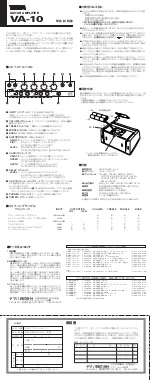
97-7224006_3-31-15
Information subject to change
31
7224 OPERATOR’S MANUAL – SECTION 5
COMPENSATION FORMULAS:
To find the value for the resistor (Rc) in the RC
network:
Rc = 20,000 x 3.14 x L x BW
where:
Rc
is compensation resistance in ohms.
L
is load inductance in henries.
BW
is bandwidth in hertz.
To find the value for the capacitor (Cc) in the
RC network:
Cc = L/ (R x Rc)
where:
Cc
is compensation capacitance in farads.
L
is load inductance in henries.
R
is resistance of load in ohms.
Rc
is compensation resistance in ohms.
STEP 7: Optimizing the Compensation
Values.
Once an approximate Rc and Cc have been
computed, these values will need to be evaluated.
To do this, install components with the required
values in the main board at locations R82 and C25
as shown in
Figure 5.11.
Remember the load you are connecting is a
part of the system and the amplifier should not
be turned on without the load being connected.
Figure 5.11 – Custom Compensation Location
After installing the components, check to ensure
that jumper J5 is correctly installed (see
STEP 4
),
then power up the amplifier without signal input.
To begin testing, input a square wave with a fre-
quency of 100 Hz to 1 kHz, or a squared pulse at a
low level (typically 0.25 to 2.0 volts). A limited-rise-
time, repetitive pulse of low duty cycle is preferred.
Observe the output current through a current
monitor or current probe. Look for clean transition
edges. The presence of ringing or rounding on the
transition edges indicates compensation problems.
(See
Figure 5.12
.)
Figure 5.12 – Compensation Effects on Waveform
If a change in compensation is necessary, an ad-
justment to the resistor component of the Compen
-
sation circuit is probably required.
If the output current waveform is ringing, the circuit
is underdamped: You have too much gain and
should lower the resistance (see
Figure 5.13
).
















































